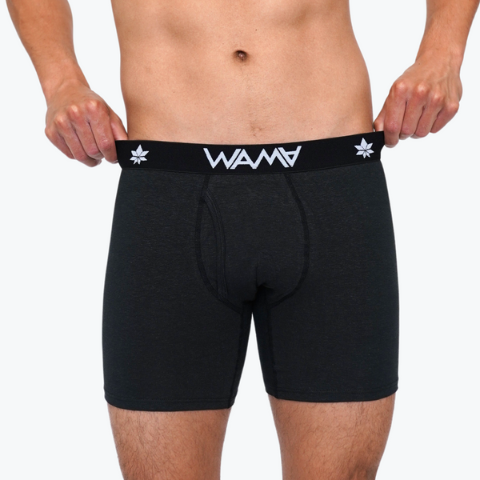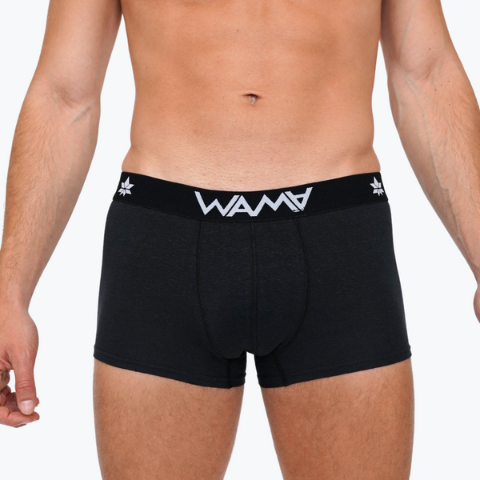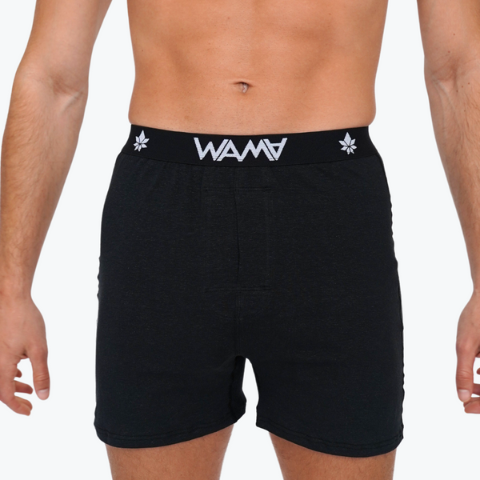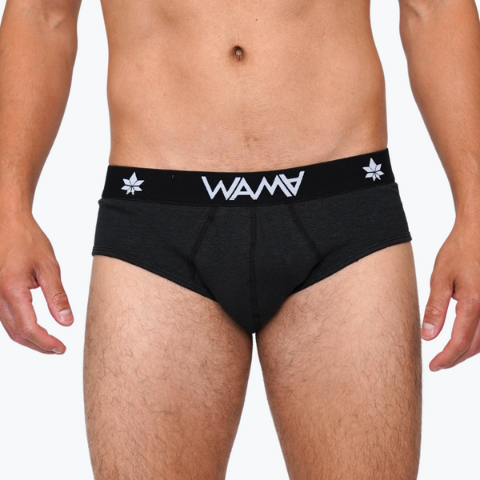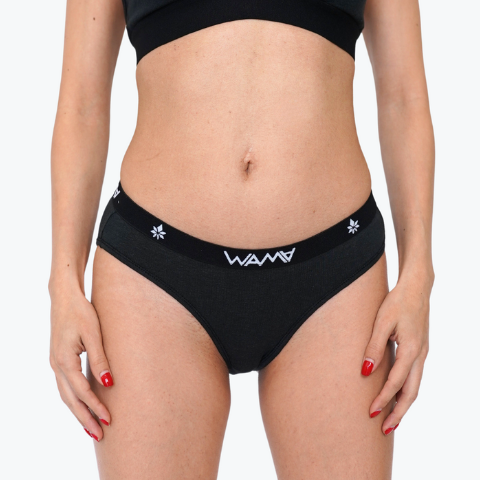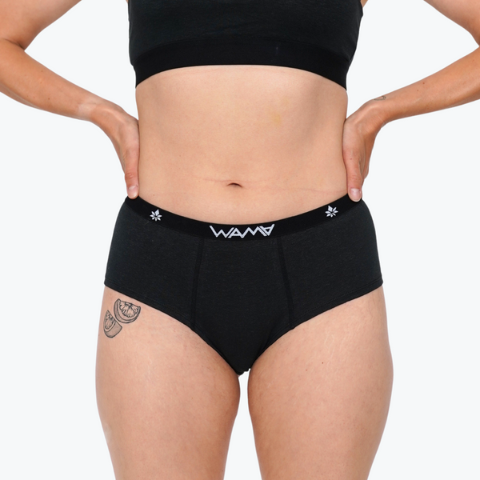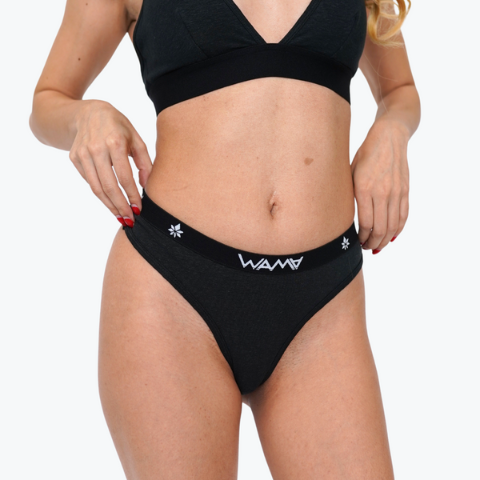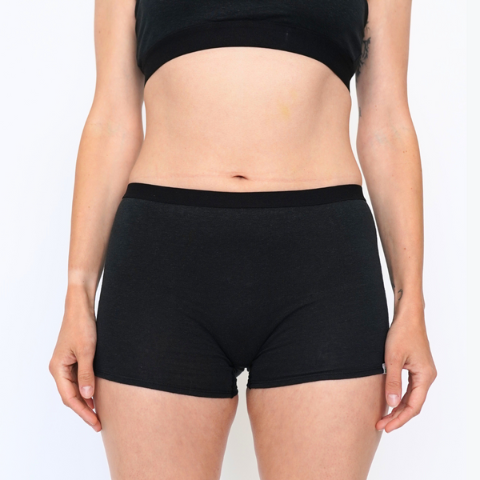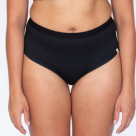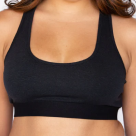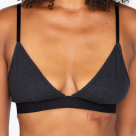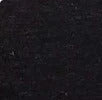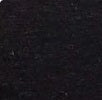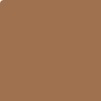
Bra shopping is considered by most to be a tedious activity. Finding a bra that fits (let alone one that fits comfortably) can be a nightmare. This largely comes down to the fact that many women don’t know their correct bra size due to a confusing sizing system. So, how do bra sizes work? That’s what we’re here to clear up.
The world is full of different breast shapes and sizes and, luckily, there are bras out there to accommodate them all. Less lucky is the fact that figuring out your perfect size can be complicated. And wearing an incorrect bra size can leave you asking questions like: “ Why does my bra hurt my ribs? ” or “Why is my bra strap falling down ?”
To clear up all the nonsense and make bra shopping easier for you, I’ll be going over all the intricacies of bra sizing. Spoiler alert: it’s a complicated issue! So, let’s begin this journey by answering the question “How do bra cup sizes work?”
HOW DO BRA CUP SIZES WORK?

A 2008 study suggests that 80% of women wear the wrong bra size (!!) A majority of those women wore bras that were too small, which can lead to all-day discomfort and pain. No fun! Your bra is supposed to fully contain and support your breasts, without discomfort. And the key to that is the fit of the cups.
So, how do cup sizes work? Cup size is the measurement that corresponds to the size and volume of your breasts. This measurement is indicated with a letter. The further along the alphabet the letter, the larger your cup size is. Generally, cup sizes start at AA and go as far as LL. Cup sizes work in tandem with the band size to ensure that there’s enough fabric and space for each of your unique breasts to rest fully contained in each cup.
HOW DO BRA BAND SIZE WORK?

A bra’s band size correlates to the measurement of your torso right under your bust. This size is measured in inches. The band of your bra is meant to do most of the work when it comes to keeping your breasts supported. That said, it’s important to get your band size correct. Band sizes can start at 28 and go up to 52.
Your cup size and band size are not independent of each other. To calculate your cup size, you need to have your band size measurement. I’ll go over all the details of measuring in a little bit, but it’s important to know that many factors can affect the accuracy of your bra size (even your respiratory state can mess with your measurements). That’s why it’s smart to become familiar with your sister sizes. What are those? Let’s find out!
BRA SIZES EXPLAINED: WHAT ARE SISTER SIZES?

The term “sister sizes” is used to describe the similarities in fit between different bra sizes. For example, someone whose size is 34B can find the same fit and comfort in a size 30D or 36A. How does this work? Well, opting for a smaller band size but a larger cup size will ensure that the volume of your breasts is still perfectly contained in the cups. Your cup size is relative to your band size, after all.
Now, why are sister sizes important? The simple answer is that bra sizes are not standardized. This means that bras made by various manufacturers may fit differently and what you consider “your size” may not always be the best choice in certain bra styles or brands.
Knowing your sister sizes gives you more options. If a bra in your true size isn’t fitting you right on the first try, experiment with your sister sizes to find the best fit!
HOW DO BRA SIZES WORK? INTERNATIONAL SIZING

If you’re feeling dizzy already, strap yourselves in, things are about to get a little more nonsensical. Everything I’ve said thus far can apply to most bra sizing systems but comes specifically from a US standpoint. Bra sizes vary across different countries. Some countries (like the US and the UK) measure band sizes in inches while others (like France) use centimeters. That’s still a pretty straightforward difference...and the cup sizes are where things get weird.
Smaller cup sizes are indicated by the same letters across several different countries’ sizing systems (ex: AA-C cups). The differences start to show up with bigger cup sizes.
In the US, we really seem to favor the D cup, with common sizes like DD, DDD, and even DDDD. Sizing systems in Europe skip across all the double and triple letters, going straight down the alphabet (meaning a DD cup is an E cup, a DDD cup is an F cup, and so on).
In the UK, a double letter system is used, in which every cup size after a C cup has its own double letter size (D and DD, F and FF, G, and GG, etc.) Note: the double-letter system is not used to indicate half sizes. A double-letter cup is still a whole size bigger than its single-letter cousin.
No matter where you’re located and no matter how wacky the sizing system can get, the key to finding a bra that fits great is knowing what to look for. And I have some tips for you that are significantly less confusing than all this letter business!
FINDING THE PERFECT BRA FIT

Knowing the answer to the question “How do bra sizes work?” we can now move on to the nitty gritty. How do we actually determine what our bra size is and what defines a perfect fit? Let’s take a closer look!
HOW SHOULD A BRA FIT?
Before we get down to the measuring business, we need to familiarize ourselves with how a bra is supposed to feel when it’s on our bodies. So, how should a bra fit?
The Band: Most of the support in a bra comes from the band. That said, it’s important for the band to be snug around the underbust area but not to the point of being restrictive. When purchasing a new bra with a hook closure, the snug fit should be achieved on the loosest hook. This way, as the bra ages and the fabric becomes less firm, you can adjust to a tighter fit.
The Cup: The whole point of cup sizes is that the correct ones are meant to have just enough coverage to contain your breasts, no matter what size they may be. The edge of the cup should rest flat against the top of your breast. If you’ve got small boobs , you may experience gaping between the cup and your breast. Alternatively, people with large breasts may find their breast tissue spilling out of their bra. If either scenario happens, adjust your cup size until you find the proper fit. Or, try an unlined hemp bra !
-
The Straps: As I mentioned, the band of your bra should be doing most of the heavy lifting while the straps are meant to keep everything in place. If you are experiencing shoulder pain or you find red indents in your shoulders at the end of the day, your straps are likely too tight, and/or the band isn’t snug enough. If your bra straps are slipping off your shoulders, they probably need to be tighter. Learn how to tighten bra straps properly to avoid unnecessary fit issues.
HOW TO MEASURE BRA SIZE

First, let’s tackle the band measurement. Put on an unlined or lightly lined bra (avoid single panel or sports bras for this). Using soft measuring tape, wrap your torso around the area right under your bust. If the resulting measurement is an odd number, round up to the next even number. This is your band size!
Next, you’ll need to get your bust measurement. To do that, wrap the measuring tape around you, keeping it at the fullest part of your chest. If it lands on a half inch, just round up to the next inch and that’s your bust measurement. Note: this is not your cup size, we’ll use this number to calculate that in the next step.
Finally, to calculate your cup size you’ll need to take your band measurement and subtract that number from your bust measurement. You will use the difference to determine your cup size. A difference of an inch means that you’re likely an A cup and the higher that number is, the larger your cup size is.

HOW DO I KNOW IF MY BRA SIZE IS CORRECT
Having your measurements down properly makes finding a good bra easier but there are still discrepancies between different bra manufacturers and bra styles so a bra may not always fit perfectly, even if it is your size. Here’s a quick mental checklist to go through when trying to determine if the fit of your bra is right:
Are your breasts fully contained by the cups? If you’re experiencing bra overflow, chances are you need a bigger cup size.
Is the bra feeling loose anywhere? Remember, the band of a new bra should be snug around your torso on the loosest hook setting.
Is the band squeezing or pinching anywhere? A bit of back fat spilling over is perfectly fine (consider the best bra for back fat if this is something that bothers you) but excessive overflow could be a sign that your band is too tight.
Is there any gaping between the cup and your breast? This may be a sign that you need a smaller cup size or sister size.
Lastly, but most importantly: Do you feel comfortable? Yes, bras are notorious for being a bit uncomfy but if a bra feels too restrictive or just “off” somehow on the first try on, you should probably pass on it! This isn’t always a sign that your size is wrong. It could simply come down to poor construction of the bra or maybe the style not being the best choice for your body.
HOW DO BRA SIZES WORK? CONCLUSION

Now that we’ve had all the bra sizes explained, I hope you feel more equipped to find your next perfect bra! Keep in mind that your body changes and your bra sizes can change along with it. Always re-measure yourself before purchasing new bras and in case you notice any changes in the fit of bras you already own.
Have you had trouble figuring out your bra size in the past? And how do you usually measure; by yourself or with the help of a store clerk? Share your thoughts in the comments!
